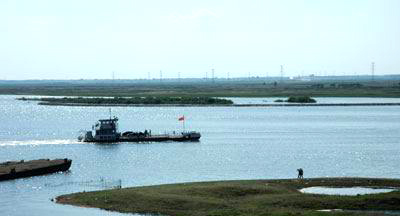Authorities in Jilin expect to increase the province's rice output by one-third over the next four years, by converting large swathes of salina land into paddy fields, an official said yesterday.
Zhao Shengtang, director of the provincial land and resources bureau, said 6.2 billion yuan (US$844 million) will be spent between next year and 2011 to convert 270,000 hectares of land that was previously unsuitable for crop planting into paddy fields.
He said the conversion will be achieved by diverting water from the Nenjiang River and using underground sources and water from a hydropower project reservoir.
The Nenjiang River
Salina land is defined as land encrusted with salt but which can be made arable with suitable treatment.
Over the past decade, governments throughout China have employed various methods to boost stocks of arable land to ensure the grain harvest, following the loss of huge areas of farmland to industrialization and urbanization.
Between 1996 and last year, the country's arable land bank fell from 130 million hectares to 121 million hectares.
Last year, the central government said the country needed a minimum of 120 million hectares of arable land to grow enough grain to feed the population.
Zou Yuchuan, president of the China Land Science Society, said: "China faces great challenges to keep its agricultural land area above the warning line, given expected industrialization and urbanization.
"In addition to improving the efficiency of land use, the country must also try to increase its arable land.
One alternative is to convert the salina land near lakes and rivers and in eastern coastal regions."
He cited the example of the successful conversion of 6,600 hectares of formerly barren salina land in eastern Shandong Province into fertile, high-yield land for crops such as cotton.
"If most of the salina land is successfully converted, there will be an increase of 2 million hectares of arable land nationwide," he said.
The authorities have also been attempting to increase the arable land bank by treating previously low-yield crop fields and reclaiming abandoned agricultural land.
(Xinhua News Agency December 27, 2007)






